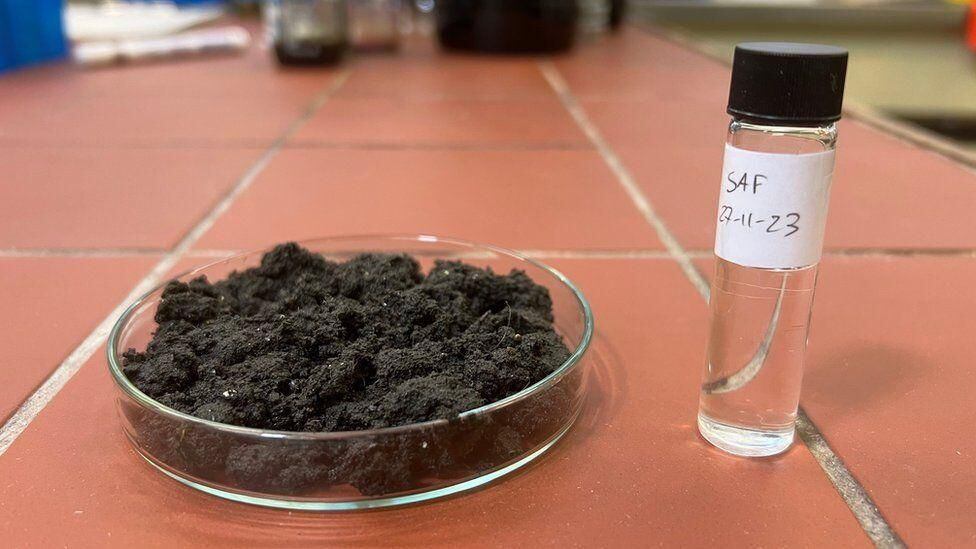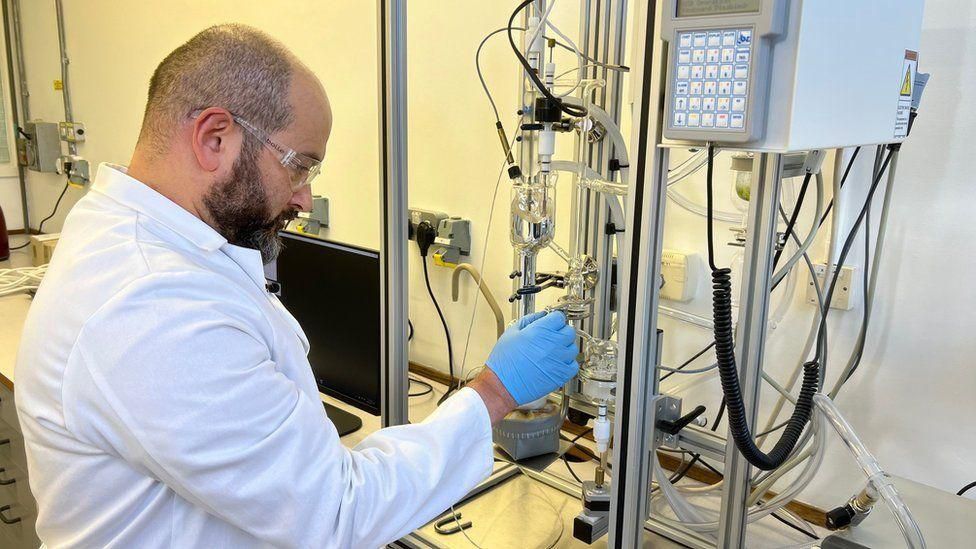The unthinkable becomes reality.
LOOK: For artificial intelligence this is the best job in the world
An aviation company developed a type of fuel made entirely from human wastewater.
Those responsible are chemists from a laboratory in Gloucestershire, United Kingdom, and they managed to transform body waste into kerosene.
“We wanted to find a low-cost raw material that was abundant. And, of course, poop is abundant,” said James Hygate, chief executive of Firefly Green Fuels.
A series of independent tests by international aviation regulators found it to be nearly identical to standard fossil jet fuel.
The Firefly team worked with Cranfield University to examine the impact of carbon on the fuel life cycle. He concluded that Firefly’s fuel has a 90% smaller carbon footprint than that of standard jet fuel.
LOOK: Futuristic, electric and luxury: this is the CruiseUp flying car for the 21st century
Hygate, who has been working from Gloucestershire to create low-carbon fuels for 20 years, commented that although the new invention is chemically similar to kerosene of fossil origin, “it has no fossil carbon, it is a fossil-free fuel.”
“Of course energy would be used (in production), but when you look at the life cycle of the fuel, a 90% saving is mind-blowing, so yes, we have to use energy, but it is much less compared to production of fossil fuels,” he added.
Aviation contributes around 2% of global carbon emissionswhich contributes to climate change.
It is a small fraction, but it is increasing. And eliminate carbon emissions from flights It is one of the most difficult challenges.
Currently work is being done to develop electric aircraft.
In addition, a company in the Cotswolds, also in the United Kingdom, promises flights powered by electric hydrogen for a dozen passengers in 2026.
But it will be years, perhaps decades, before mass air travel is powered by entirely new technology.
LOOK: These cell phones will no longer be compatible with WhatsApp from January 2024
Therefore, finding new and more ecological ways to produce kerosene without using fossil fuels is now an “global gold rush”.

On a small farm in Gloucestershire, Hygate began converting rapeseed oil into biodiesel for cars and trucks 20 years ago.
His company, Green Fuels, now sells equipment to convert cooking oil into biodiesel and has customers all over the world.
He then began searching for ways to produce green jet fuel. He tried used oils, food scraps and even agricultural remains.
Later, with human waste. And for this she teamed up with Sergio Lima, a chemist at Imperial College London. Together they developed a process that transforms feces into electricity.
To do this, first of all, they must create what they call “biocrude”.
LOOK: Infinite ‘Scroll’: the ‘fentanyl’ of social networks?
It looks like oil: thick, black, sticky. But most importantly, it behaves chemically like crude oil.
“What we are producing here is a fuel with net zero emissions,” says Lima, who is also director of research at Firefly Green Fuels.
When Lima saw the results for the first time, he was amazed.

“This is very exciting because it was produced from a sustainable raw material, to which we all contribute.”
In his laboratory, the scientist has a miniature version of the enormous fractional distillation columns that rise above oil refineries.
Yours does the same. The liquid is heated and then the gases are distilled at precise temperatures to get the right “cut” for different fuels.
LOOK: What is the best hearing aid design to take care of your ears?
Drop by drop, a new transparent liquid is deposited in the collection tubes.
“This is our biofuel,” he says with a smile.
“Seeing the final fuel is amazing.”

Biokerosene is being tested independently at the DLR Combustion Technology Institute of the German Aerospace Center, in collaboration with Washington State University.
The UK’s SAF (Sustainable Aviation Fuels), based at the University of Sheffield, will also carry out further trials in the future.
The first results confirm that the fuel It has a chemical composition almost identical to that of fossil fuel for A1 aircraft.
For its part, the UK Department of Transport awarded the team a research grant of more than US$2 million.
This group of scientists can make kerosene in a test tube in a laboratory. But that is very far from replacing to fuel in the world’s airports.
Hygate did his math. Each human being, he estimates, produces enough wastewater in a year to produce 4 to 5 liters of biofuel for jets.
To fly a passenger plane from London to New York would require the wastewater of 10,000 people a year.
And another 10,000 to return.
Put another way, the UK’s total wastewater supply would cover around 5% of the country’s total aviation fuel demand.
It may not seem like much, but he insists: “It’s exciting.”
Fuel made from waste oils, corn oils or other non-fossil sources is called sustainable aviation fuel.

Issue the same amount of carbon dioxide on airplanesbut since the plants originally used for the fuel captured CO2 as they grew, experts consider this to represent an 80-90% reduction in carbon emissions from fossil fuels.
Environmental advocates insist that people should simply fly less and use crops for food or energy production, not jet fuel.
Environmentalists favor wastewater fuel because “human waste is perhaps the only form of garbage that society really can’t help but produce“, as expressed by Cait Hewitt, policy director of the Aviation Environment Federation.
Today only 0.1% of aviation fuel is “sustainable.” Given this reality, Hygate’s 5% target seems like a meaningful goal.
Furthermore, it uses a raw material that no one else wants, but which is universal.
“Although it was developed in the south-west of the UK,” he says, “it is a global opportunity.”
“The opportunities in highly populated cities are enormous. The amount of fuel we can create is enormous.”

Source: Elcomercio
I have worked in the news industry for over 10 years. I have a vast amount of experience in writing and reporting. I have also worked as an author for a number of years, writing about technology and other topics.
I am a highly skilled and experienced journalist, with a keen eye for detail. I am also an excellent communicator, with superb writing skills. I am passionate about technology and its impact on our world. I am also very interested in current affairs and the latest news stories.
I am a hardworking and dedicated professional, who always strives to produce the best possible work. I am also a team player, who is always willing to help out others.

:quality(75)/cloudfront-us-east-1.images.arcpublishing.com/elcomercio/QCHUSU7EWVEVVGL6TTPUAIGRQA.jpg)

:quality(75)/cloudfront-us-east-1.images.arcpublishing.com/elcomercio/FTGVKAAYQNCIBBJYPI6PKBTWUA.jpg)
:quality(75)/cloudfront-us-east-1.images.arcpublishing.com/elcomercio/RS7SRZHIFFEGHHVJ5EVBODG7GE.jpg)
:quality(75)/cloudfront-us-east-1.images.arcpublishing.com/elcomercio/PNGAORCL6VDDXCBVXEPYWODYY4.jpg)
:quality(75)/cloudfront-us-east-1.images.arcpublishing.com/elcomercio/5BWCQCA2UJDOXH6CJR77AJBRXY.png)
